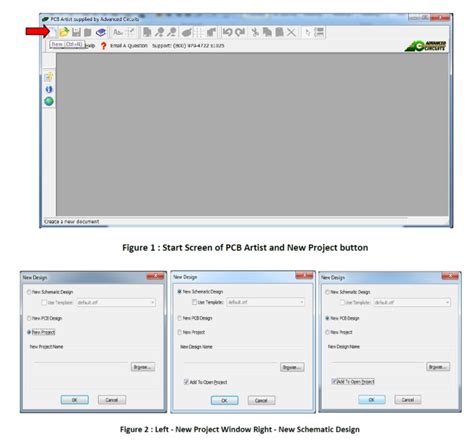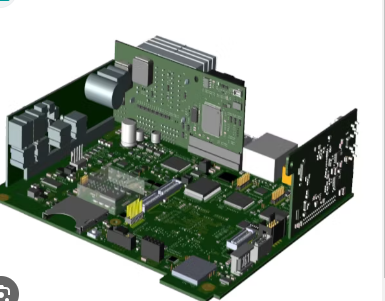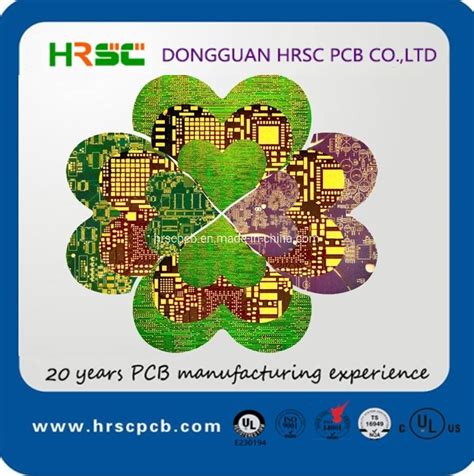Mastering PCB Design with Advanced Circuits’ PCB Artist Tool
Key Takeaways
Understanding the intricacies of PCB design can significantly enhance your ability to produce high-quality products, particularly when utilizing tools like Advanced Circuits’ PCB Artist. This tool stands out due to its user-friendly interface and comprehensive features, making it an excellent choice if you are starting your journey in the pcb manufacturing business. As you explore the various functionalities, you will appreciate how it streamlines processes, thereby cutting down on the pcb manufacturing cost without compromising quality. With numerous pcb manufacturing companies available, selecting the right tools and materials is essential for ensuring that your designs are not only innovative but also feasible in a competitive market. By leveraging the capabilities of PCB Artist, you can tackle common challenges in pcb design and optimize your workflow for producing reliable structures that align with industry standards. As a result, you will find that mastering these elements culminates in a smoother journey through each stage of your projects and increasingly successful outcomes.
Mastering the Basics of PCB Design with PCB Artist
When you begin your journey into PCB design with PCB Artist, it’s essential to grasp the foundational concepts that underpin successful layouts. Understanding the nomenclature of PCB manufacturing and how various components fit into this ecosystem is crucial. You should familiarize yourself with the different layers of a printed circuit board, as well as the design rules that guide your layout decisions. Recognizing how PCB manufacturing companies approach these designs can provide insight into best practices and common pitfalls to avoid.
Additionally, take note of the relationship between your design choices and PCB manufacturing costs—sometimes, a minor tweak in component selection or layout can significantly influence overall production expenses. You might find that certain components are more readily available or more cost-effective, impacting your budget and timeline.
Here’s a simple comparison table to illustrate various factors affecting PCB manufacturing cost:
| Factor | Impact on Cost |
|---|---|
| Component Selection | High – rare components increase cost |
| Layer Count | Medium – more layers lead to higher production costs |
| Complexity of Design | High – intricate designs require more advanced processing |
| Quantity Ordered | Low – higher quantities reduce per-unit cost |
| Testing Requirements | Medium – extensive testing can add to costs |
By keeping these basics in mind and leveraging the PCB Artist tool effectively, you can refine your design process, ensuring that you’re making informed decisions that enhance both functionality and cost-effectiveness in your PCB manufacturing business. This foundational knowledge will serve as a stepping stone as you delve deeper into specific features and advanced strategies for successful PCB development.

Key Features of Advanced Circuits’ PCB Artist Tool
The PCB Artist tool from Advanced Circuits stands out in the realm of printed circuit board design due to its user-friendly interface and powerful capabilities tailored for both novice and experienced designers. One of the most notable features is its extensive component library, which simplifies the component selection process significantly. By integrating various pcb manufacturing companies, the tool ensures that you have access to the latest components, thereby enabling you to design circuits with modern technology.
Additionally, the design rule check (DRC) functionality allows you to quickly identify potential errors in your layout before any pcb manufacturing occurs. This feature is critical for maintaining high-quality standards and reducing the overall pcb manufacturing cost by minimizing design revisions. Moreover, with its intuitive drag-and-drop capability, creating complex PCB layouts becomes a seamless experience, ensuring that even intricate designs are executed with precision.
“By utilizing tools like PCB Artist, you can streamline your workflow and enhance your design’s reliability.”
Furthermore, the tool provides advanced simulation features that enable you to test your designs virtually. This can prove invaluable in understanding how your project will perform under real-world conditions without incurring any costs associated with physical prototypes. As you explore these capabilities within the PCB Artist environment, you’ll find that it not only enhances your efficiency but also contributes significantly to a successful pcb manufacturing business model.
Whether you are aiming for simplicity or complexity in your designs, leveraging these features will undoubtedly set a solid foundation for achieving high-quality results in your PCB projects.
Step-by-Step Guide to Creating Your First PCB Layout
Creating your first PCB layout can seem daunting, but with Advanced Circuits’ PCB Artist Tool, the process becomes streamlined and efficient. Begin by launching the tool and familiarizing yourself with its interface; understanding how to navigate through different features is crucial. Start by setting up your project preferences, including the board dimensions which directly impact pcb manufacturing considerations. Choosing the right components is essential, as this influences both functionality and the pcb manufacturing cost; aim to select components from the comprehensive library that comes with PCB Artist. Next, create your schematic: this foundational step maps how your components will connect and interact. Once your schematic is ready, you can proceed to the layout stage, where you will arrange the components on your board. It’s important to optimize space while ensuring that signal integrity is maintained; this balance will play a significant role in the efficiency of your pcb manufacturing business. Remember to utilize features such as auto-router tools for effective trace routing or manual routing options for precise control over connections. After finishing your layout, engage in thorough design rule checks (DRC) to catch potential issues early on; this is crucial for successful collaboration with pcb manufacturing companies later in production. By following these steps, you will not only create a functional board but also gain confidence in utilizing PCB Artist for future projects.
Tips and Tricks for Efficient PCB Design Workflows
When engaging with PCB design, utilizing Advanced Circuits’ PCB Artist tool can significantly streamline your processes. To enhance your efficiency, consider implementing these practical tips. First, familiarize yourself with the layout options available, allowing you to tailor your designs effectively. Organizing your workspace within the tool can vastly improve accessibility to essential functions and resources. Don’t overlook the importance of a structured workflow; establish a series of steps you follow consistently to ensure nothing is missed during the design phase.
Additionally, integrating your designs with PCB manufacturing requirements early on will save time later. Understanding the influence of pcb manufacturing cost on your design decisions is crucial; opting for components that cater to budget constraints without compromising quality is key. Moreover, building a solid relationship with reputable pcb manufacturing companies can provide valuable insights into best practices and potential pitfalls in the production phase.
Utilizing online resources or forums related to PCB design can also offer support when facing specific challenges within the workflow. Lastly, by continuously learning and adapting your strategies based on feedback from previous projects, you’ll enhance your overall design efficiency. Remember that proper planning not only leads to successful designs but also assists in managing expectations and costs associated with running a successful pcb manufacturing business. Consider exploring comprehensive services such as Andwin PCB for detailed information and solutions tailored to various PCB requirements.

Common Challenges in PCB Design and How to Overcome Them
When embarking on your journey with PCB design, you may encounter several common challenges that can impede your progress. One major obstacle is the complexity of layouts. As your designs grow in sophistication, managing multiple components on a single board can become overwhelming. To tackle this, take advantage of the comprehensive features offered by Advanced Circuits’ PCB Artist tool. It provides intuitive interfaces that assist you in efficiently visualizing and manipulating circuit layouts.
Another challenge lies in reducing the PCB manufacturing cost without sacrificing quality. Understanding the principles of cost-effective design allows you to choose materials wisely and optimize your layout for better yield. Collaborating with reliable PCB manufacturing companies can aid in this aspect, as many offer valuable insights into cost-efficiency during production.
Additionally, ensuring proper component selection is vital for successful outcomes. Utilizing the component library within PCB Artist can streamline this process, allowing you to quickly find suitable parts that align with your design specifications while keeping functionality intact.
Finally, integrating effective communication with PCB manufacturing businesses is crucial. Express clear expectations regarding timelines and quality standards to avoid delays and additional costs during the production phase. By addressing these common challenges head-on, you can enhance the overall efficiency of your PCB projects and produce high-quality printed circuit boards with confidence.
Leveraging the Library: Component Selection and Management
In PCB design, effective component selection and management are crucial to ensuring that your layout meets the necessary specifications for functionality and reliability. When using Advanced Circuits’ PCB Artist tool, you have access to a comprehensive library that allows you to easily browse through a vast array of components. This can significantly streamline your design process. To begin, it’s important to familiarize yourself with the library’s interface, as it offers various search and filter options that help you pinpoint the specific parts needed for your project.
Consider the implications on PCB manufacturing cost—utilizing a well-organized library can reduce the time spent on sourcing components from PCB manufacturing companies, which in turn can lower overall project costs. As you select components, ensure they are compatible with your design requirements; this not only makes assembly easier but also aids in avoiding potential setbacks during the PCB manufacturing phase.
Another essential aspect is managing your component inventory effectively. Keeping track of which parts are readily available ensures that you can meet deadlines without delay. This proactive approach not only benefits you as an individual designer but can also enhance your collective results if you’re operating within a PCB manufacturing business context. Remember, proper management of components directly influences design efficiency, leading to high-quality printed circuit boards ready for production and minimizing any hindrances related to component shortages or incompatibility during PCB manufacturing processes.

Quality Assurance: Ensuring Functional and Reliable Designs
When working with PCB design, ensuring the quality and functionality of your printed circuit boards is paramount. One of the key aspects of achieving quality assurance lies in understanding the entire PCB manufacturing process, which involves collaboration with reputable PCB manufacturing companies. It’s crucial to perform rigorous testing on your designs to identify potential flaws or inefficiencies before moving to production. Incorporating reliable testing protocols not only helps in validating your design but also significantly impacts the overall PCB manufacturing cost.
Moreover, using the right tools, like Advanced Circuits’ PCB Artist, facilitates straightforward revisions and enhancements that can streamline this process. By leveraging the library for selecting components wisely, you enhance your chances of producing a functional end product. Avoiding common pitfalls during design can drastically reduce costs and ensure that your final product meets industry standards for reliability.
Engaging with a knowledgeable team in a professional PCB manufacturing business can also provide insights on best practices that further reinforce the quality assurance process. Remember, a well-designed PCB not only functions correctly but also stands the test of time in various applications. Ultimately, maintaining diligence in quality assurance goes hand-in-hand with utilizing advanced tools and resources effectively as part of your PCB design journey.

User Testimonials: Success Stories with PCB Artist Tool
Users of Advanced Circuits’ PCB Artist tool can share compelling stories about how this software has transformed their approach to PCB design. Testimonials frequently highlight the ease of use and robust features that make creating custom layouts a breeze. For instance, some users mention how the intuitive interface simplifies intricate tasks, allowing you to focus more on design creativity rather than getting bogged down in technical details. Moreover, many have noted that the tool’s seamless integration with various pcb manufacturing companies streamlined their process, reducing lead times and enhancing overall productivity. This increase in efficiency not only decreases your pcb manufacturing cost but also empowers you to meet deadlines and exceed customer expectations. Whether you’re running a pcb manufacturing business or working on personal projects, the positive feedback about the PCB Artist tool reflects its ability to help designers navigate common challenges, resulting in successful project completion and innovation in designs. Users consistently praise their ability to create high-quality printed circuit boards swiftly while maintaining reliability in their end products, ultimately paving the way for new opportunities within the competitive landscape of PCB development.
Conclusion
As you wrap up your journey into PCB design with Advanced Circuits’ PCB Artist tool, it’s clear that mastering the intricacies of printed circuit boards can significantly impact your projects. You now possess a solid understanding of how to utilize this powerful tool to navigate the complexities of pcb manufacturing. With the right approach, you can streamline your designs and reduce pcb manufacturing costs, ultimately enhancing your competitive edge in the market.
The insights gained about collaboration with pcb manufacturing companies ensure that you can select components and manage designs effectively, allowing you to overcome common challenges in the pcb manufacturing business. As you continue to refine your skills, remember that leveraging advanced features will not only improve your workflow but also lead to greater reliability in your final products. Embrace these tools and techniques as essential components of your PCB design strategy, ensuring the production of high-quality boards that meet industry standards and client expectations. Your success in PCB design hinges on continual learning and adaptation, making the use of these resources invaluable as you advance in this field.
FAQs
What is the role of PCB manufacturing in the electronics industry?
PCB manufacturing is fundamental to the electronics industry, as printed circuit boards (PCBs) provide the necessary support and connectivity for electronic components. Understanding this process is crucial for anyone involved in electronics design and manufacturing.
How can I find reliable PCB manufacturing companies?
To identify trustworthy PCB manufacturing companies, you should consider their industry reputation, customer testimonials, and their capabilities to handle your project requirements. Reviewing their previous work can also provide insight into their quality standards.
What factors influence PCB manufacturing cost?
The PCB manufacturing cost is influenced by several elements, including the complexity of the design, materials used, layer count, and volume of production. By optimizing these factors during your design process, you can effectively manage costs.
Is it beneficial to establish a PCB manufacturing business?
Engaging in a PCB manufacturing business can be highly rewarding due to the growing demand for electronic products across various sectors. A well-planned strategy along with cutting-edge technology can pave the way for success in this competitive market.







